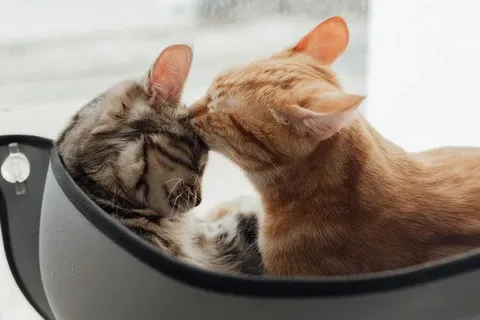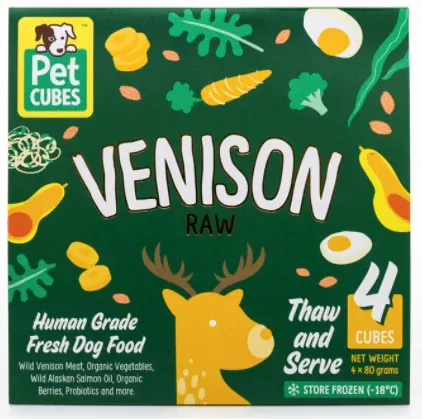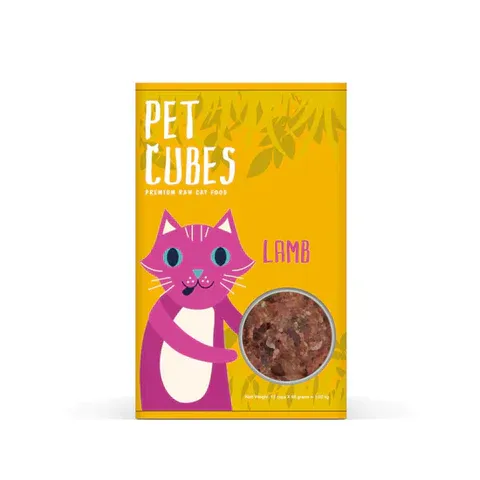In recent years, the Barf Diet For Cats has surged in popularity among cat owners seeking the most natural nutrition for their feline friends. Mimicking the prey-based diet of wild cats, raw feeding promises superior health outcomes compared to processed kibble. If you’re considering switching your cat to a BARF diet, this comprehensive guide explores what it entails, its benefits, safe food options, and essential tips for safe implementation.
 Raw cat food feeding illustration showing fresh meat portions for felines
Raw cat food feeding illustration showing fresh meat portions for felines
What is the BARF Diet for Cats?
BARF stands for “Biologically Appropriate Raw Food” or “Bones and Raw Food,” a feeding approach designed to replicate the ancestral diet of cats. This raw cat food diet emphasizes unprocessed ingredients like muscle meat, raw bones, organs, and minimal plant matter, providing high moisture (65-70%), protein, taurine, essential fatty acids, vitamins, and minerals found naturally in prey.
Unlike commercial dry foods that undergo high-heat processing, which can degrade nutrients, BARF maintains these vital elements intact. Cat owners can prepare homemade BARF meals or purchase pre-made options from reputable pet food suppliers. According to veterinary nutritionists, this diet closely aligns with a cat’s obligate carnivore biology, supporting optimal health from kittenhood to senior years.
Why Choose Raw Food: Key Benefits for Cats
Switching to a BARF diet for cats offers multiple evidence-based advantages, backed by pet nutrition experts and anecdotal reports from owners.
Soothes Allergies and Improves Skin Health
Food sensitivities often manifest as itching, flaky skin, digestive upset, or dull coats due to low-quality ingredients in processed foods. BARF’s fresh, high-quality proteins and natural anti-inflammatory omega-3 fatty acids from sources like fish promote healthy skin and shiny fur. Studies and vet observations note fewer allergic reactions with raw diets compared to ultra-processed kibble.
Enhances Digestion and Reduces Waste
Raw food digests more slowly and completely in a cat’s short, acidic gut, leading to firmer, less frequent stools as the body absorbs nearly all nutrients. Cats with IBS or chronic diarrhea often show marked improvement, minimizing litter box odors and volume.
Supports Urinary Tract Health
With moisture levels mirroring wild prey, BARF increases hydration, diluting urine and lowering risks of crystals, infections, and blockages—common in dehydrated cats on dry food.
Boosts Energy and Vitality
Owners frequently report increased playfulness and stamina post-transition. High-quality proteins and fats fuel sustained energy without crashes, transforming sedentary “couch cats” into active hunters.
Promotes Dental Hygiene
Chewing raw meaty bones naturally scrapes plaque via enzymes and abrasion, reducing tartar buildup and gingivitis far better than brushing alone.
 PetCubes raw chicken meal pack for cats, highlighting lean protein cuts
PetCubes raw chicken meal pack for cats, highlighting lean protein cuts
Is Raw Meat Safe for Cats? Risks and Precautions
As obligate carnivores, cats thrive on raw meat—their digestive systems handle bacteria like E. coli better than humans due to higher stomach acidity and shorter intestines. However, improper handling poses risks of contamination.
Always consult a veterinarian before starting, especially for immunocompromised or senior cats. Source meat from trusted suppliers, freeze for 3 weeks to kill parasites, and practice strict hygiene: use separate cutting boards, gloves, and thaw in the fridge. Avoid veggies and carbs in excess, as cats derive minimal benefit and may struggle to process them—focus on 80-90% meat/organs/bones.
For balanced nutrition, reference guidelines from bodies like the AAFCO or FEDIAF, ensuring taurine levels meet 0.1-0.2% dry matter.
Safe Raw Foods for a BARF Cat Diet
Select variety for complete nutrition. Here’s a vetted list:
- Chicken: Rich in B vitamins, phosphorus for bones/kidneys, and lean protein for muscle maintenance.
- Venison: Superior protein with B vitamins (thiamin, riboflavin, B6) for immunity and vitality.
 PetCubes raw venison pack designed for feline nutrition
PetCubes raw venison pack designed for feline nutrition
- Salmon: Omega-3 powerhouse for joints, skin, and anti-inflammation; high in protein and minerals.
- Duck: Provides zinc, iron, B vitamins for blood health and coat shine.
 PetCubes raw duck portions for cats, emphasizing nutrient density
PetCubes raw duck portions for cats, emphasizing nutrient density
- Lamb: Zinc boost for immune function, preventing deficiencies linked to illness.
 Raw lamb cuts from PetCubes, nutrient-packed for cat health
Raw lamb cuts from PetCubes, nutrient-packed for cat health
- Turkey: Taurine-rich for vision, heart, and digestion; high protein minus fat.
- Carrots: Minimal amounts for beta-carotene (antioxidant for eyes/skin) and fiber.
- Pumpkin: Fiber for diarrhea relief, plus vitamins A/C/K and minerals.
Rotate proteins weekly to prevent imbalances.
 PetCubes complete raw cat food selection in freezer-ready packs
PetCubes complete raw cat food selection in freezer-ready packs
Feeding Guidelines: How Much BARF for Your Cat?
Feed 2-4% of ideal body weight daily, split into 2-3 meals. Adjust for age, activity, neuter status, and metabolism—e.g., 100g for a 5kg active adult cat.
| Cat Profile | Daily Amount (% Body Weight) |
|---|---|
| Kitten/Active | 4-6% |
| Adult Indoor | 2-3% |
| Senior/Sedentary | 1.5-2% |
Monitor weight weekly; consult vets for precision.
Supplements rarely needed with balanced recipes, but add omega-3 or kelp if vet-recommended.
Preparing and Transitioning to BARF
Preparation Tips:
- Meat/organs/bones (80/10/10 ratio).
- Optional: Eggs, fish oil.
- Tools: Dedicated boards, bowls, gloves, shears.
Freeze portions; thaw safely. For convenience, opt for vet-formulated pre-made raw cat food.
Transition:
- Days 1-3: 25% raw + 75% old food.
- Days 4-7: 50/50, then 75/25.
- Monitor stools; slow if loose. Kittens adapt faster.
Final Thoughts on BARF Diet for Cats
Embracing a BARF diet can transform your cat’s health, vitality, and longevity by delivering species-appropriate nutrition. Prioritize safety, balance, and vet guidance to maximize benefits while minimizing risks. Start small, observe changes, and enjoy a happier, healthier feline companion—your cat will thank you with purring enthusiasm.
For personalized advice, schedule a vet checkup today. Explore more raw feeding resources from trusted pet nutrition sites.
Reviewed by:
 Portrait of Dr. Francis Cabana, wildlife nutrition expert
Portrait of Dr. Francis Cabana, wildlife nutrition expert
Dr. Francis Cabana, Director of Nutrition. A leading wildlife nutritionist with a PhD from Oxford Brookes University, specializing in animal ecology, metabolism, and raw diets.
References:
- PetCubes Nutrition Guides: BARF Pros/Cons
- AAFCO Cat Food Nutrient Profiles
- FEDIAF Nutritional Guidelines for Cats
